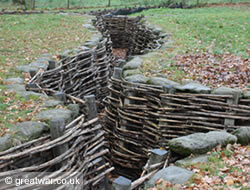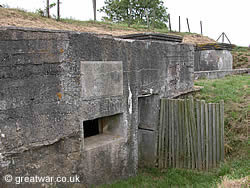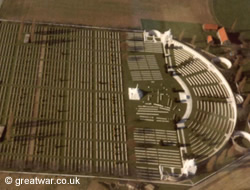Memorial Museum Passchendaele 1917
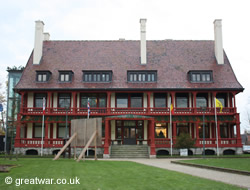
|
This museum tells the story of the war in the Ypres Salient with special emphasis on the Battle of Passchendaele 1917, one of the bloodiest battles of the First World War.
The Memorial Museum Passchendaele 1917 is the ideal place to start a visit of the battlefields of Passchendaele. The museum is situated in the centre of Zonnebeke in the Zonnebeke Chateau only few kilometres from the A19 road (exit 4). It is about 3 kilometres from Tyne Cot Military Cemetery, the largest British and Commonwealth cemetery in the world.
During the Great War of 1914-1918 the villages of Passendale / Passchendaele, Zonnebeke, Beselare, Geluveld and Zandvoorde became famous for the part they played on the battlefields of the Ypres Salient. The area was devastated by the end of the war in November 1918.
The Museum and its Collections
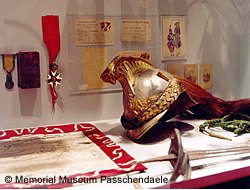
|
The Memorial Museum Passchendaele 1917 was opened in Zonnebeke Chateau on ANZAC Day 25 April 2004. It was refurbished and extended from the museum formerly known as the Streekmuseum, which was located on the second floor of Zonnebeke chateau from 1989 until 2002. A valuable collection has been built up which can be considered as the biggest public collection of the First World War in West Flanders.
For the Memorial Museum Passchendaele 1917 the interior of Zonnebeke Château was adapted with respect for the authenticity of the building. The replica dugout rooms are located in the cellars, the first floor houses the museum reception, tourist information, shop and temporary exhibitions. The museum galleries start on on the second floor. Outside the museum there is an impressive replica network of trenches constructed during 2013. The trench system, is accessible from the museum.
Third Battle of Ypres (The Battle of Passchendaele)
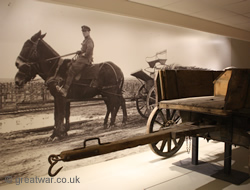
|
A wing of the museum focuses on the tragedy of the Third Battle of Ypres within the whole of the First World War, the problem for the Allies in their attempt to break through the German front line and the part played by the different nations in The Battle of Passchendaele 1917. A new gallery opened since the 2013 museum refurbishment is called “Remembrance” with a focus on the aftermath of the war for the landscape, the soldiers, civilians and animals whose lives were changed by the war.
Deep Dugouts
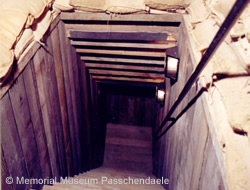
|
Visitors can continue the route through the museum through an impressive reconstruction of deep dugouts from the 1917 period of fighting on this battlefield. Steps lead down into a 20 foot deep dugout with headquarters, accommodation, workshop, communication room and first aid post. In the tenth and last room of the dugout visitors can see historical photos, film of excavations and relics.
Dugouts in Zonnebeke
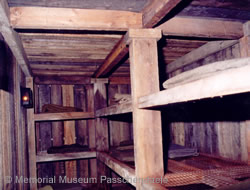
|
The Third Battle of Ypres (31 July - 10 November 1917) smashed the landscape around Zonnebeke to pieces. Having gradually taken German territory and finally reached the higher ground on the Passchendaele ridge in November 1917 the British Army established a new line. There was, however, very little surviving natural shelter to protect them from enemy artillery or air observation in the form of woods, farms and buildings. Specialist Tunnelling Companies, which had been working in the south of the Salient preparing for the Battle of Messines from 7 June 1917, were moved into the northern sector of the Ypres Salient to construct underground shelters and dugouts.
In January 1918 25,000 British tunnellers and 50,000 attached infantry built almost 200 independent constructions. These dugouts were built to accommodate from 50 to 2,000 men (such as at Wieltje and Hill 63). In March 1918 there were more men living underground than there are inhabitants living in the area today. After the war, when the battlefields were cleared and the fields were levelled during the 1920s, the entrances to these underground constructions were closed up and forgotten. Eighty years on, although some are flooded, they are still in good condition and are now the most authentic relics of the Great War in Flanders.
Zonnebeke and its five villages have the biggest concentration of underground constructions. In 1983 a dugout was discovered at the rear of the Terca brickworks. The dugout, called Bremen Redoubt, was open to the public until 1998. During the archaeological excavations of the Augustinian abbey a second dugout was discovered under Zonnebeke church. The outline of the dugout is marked in an archaeological garden. The most important discovery took place on 21 February when a farmer’s wife disappeared into the ground while she was washing the windows. Beecham Dugout was discovered no more than 400 metres from Tyne Cot Cemetery (Passendale). All dugouts are located within a radius of about a mile from the museum, Zonnebeke Church dugout being in the grounds of the Zonnebeke chateau itself.
Because these dugouts are generally not accessible for the public, a life-like reconstruction has been built in the Memorial Museum Passchendaele 1917.
Replica Trench
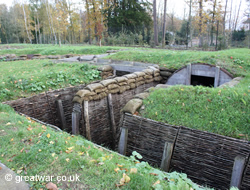
|
Having looked around the galleries inside the museum visitors are invited to make their way into an impressive network of outdoor British and German trenches. The trenches have been constructed using the same materials and methods of construction to give an accurate example of a set of 1914-18 trenches on the Western Front.
Education
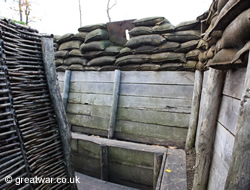
|
For information about facilities and activities for students, reservations and guided tours, you can telephone the Education Officer or visit the museum's website:
Telephone: +32 (0) 51 77 04 41
Website: www.passchendaele.be Education
The Platoon Experience (14+): Living History for Students & Teachers
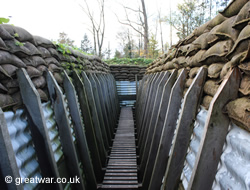
|
The museum has taken on an original approach to learning by offering students (14 years and over) and teachers the opportunity to play a personal part in a Living History event. This is a full day event. A half day event is being offered from 2021.
The event is historically correct, based on a real story and led by one or two experienced guides. A group will put itself in the position of each of its members being an Australian soldier in this platoon back in 1917. The members of the group will learn about their individual man, how he lived and will discover his fate by the end of the day. The Living History event includes:
- visit to the Memorial Museum Passchendaele 1917
- walk in the footsteps of the platoon on 4 October 1917 during the attack on that date
- arrival at Tyne Cot Cemetery and guided tour.
For information and bookings visit the museum website:
Website: www.passchendaele.be The Platoon Experience
Research Centre
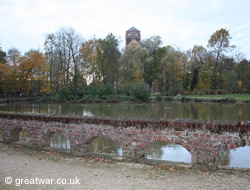
|
Since 2014 the museum has a new research centre. The archives include two important collections relating to the history of the village of Zonnebeke:
- Collection One: archive material relating to the Third Battle of Ypres 1917 including books, photos, documents.
- Collection Two: Local history documentation and archives for Zonnebeke.
For opening hours and location see the page on the Memorial Museum Passchendaele 1917 website below:
Address: Ieperstraat 1, 8980 Zonnebeke
Telephone: +32 (0)51 77 04 41
Email: kenniscentrum@zonnebeke.be
Website: www.passchendaele.be Research Centre
Passchendaele Archives Database
The Museum has been undertaking a project to put faces and stories to the names of the dead and missing of the Battle of Passchendaele 1917 by building a personal record with photographs, family documentation and information from military sources.
If a member of your family fought in the Third Battle of Ypres during July - November 1917 and died in action or of wounds and you have information about him the museum would like to hear from you. For more information you can email or visit the museum's website to download a questionnaire to fill in details of your relative.
Telephone: +32 (0)51 77 04 41
Email: archives@passchendaele.be
Website: archives.passchendaele.be Passchendaele Archives
Museum Shop
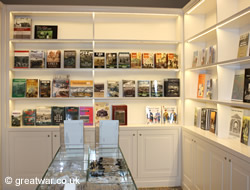
|
The museum shop sells a range of maps, books, cards and items relating to the First World War and Remembrance.
Visitor Information
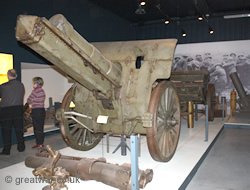
|
Opening Hours
Daily 09.00-18.00 hours (last admission 16.30 hours). A museum visit takes about 2 hours.
Closed annually: 16 December to 31 January
Admission
Admission charge. Go to the museum website for up to date admission fees, group rates, discounts and advance booking:
Website: www.passchendaele.be
Location of the Memorial Museum Passchendaele 1917
Leaving Ypres / Ieper centre via the Menin Gate, drive straight over the traffic lights onto the Zonnebeeksweg N332 road to Potijze and Zonnebeke. Zonnebeke village is approximately 7 kilometres from Ypres / Ieper.
At the roundabout with a brown metal pyramid type sculpture, take the first exit signposted N332 to Roeselare 15 / Zonnebeke 1 Km. After about 500 metres the road bends to the left. About 200 metres further on you will see the square tower of Zonnebeke church. Look to the right for a right turn next to a high wall (which surrounds the chateau) into Berten Pilstraat. A blue parking sign directs you to the car and coach parking area of the Memorial Museum Passchendaele 1917.
Parking
- Free car parking is available and is signposted from de Berten Pilstraat.
- One bus parking space is available on de Berten Pilstraat to park for 30 minutes to drop off/pick up. Buses can park in the Roeselarestraat near house no. 59.
For any queries about parking please contact the museum (see below for contact details).
Contact Details
Memorial Museum Passchendaele 1917, Berten Pilstraat 5A, 8980 Zonnebeke, Belgium
Telephone: +32 (0) 51 77 04 41
Email: info@passchendaele.be
Website: www.passchendaele.be
Related Topics
Bayernwald German Trenches, Wijtschate
A restored German trench-system in Wytschaete, south of Ypres, including 300 metres of trenches, four concrete bunkers, a mortar post and a 100 feet deep mineshaft.
Zandvoorde German Bunker
A very impressive German bunker dating from 1916. The bunker consists of six compartments. It gives the opportunity to look upon the battle of Passchendaele 1917 from a German point of view.
German Command Post Bunker at Zandvoorde
Tyne Cot Cemetery and Memorial to the Missing
For detailed information about Tyne Cot cemetery and memorial see our pages at:

